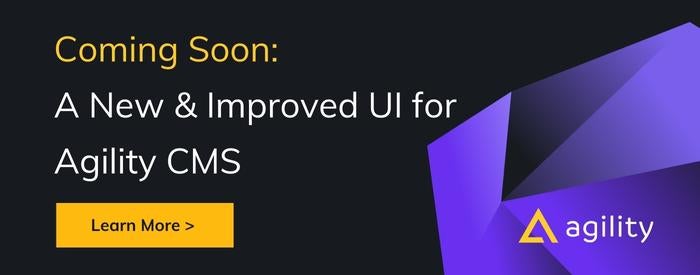What makes enterprise SEO different?
The chief difference between enterprise-level SEO and SEO for other businesses is these strategies need to be scalable across thousands of pages, if not millions.
Enterprise SEO takes a large-scale approach to SEO. It aligns the company’s business goals with a more significant market opportunity to scale its brand reputation.
Enterprise SEO vs traditional SEO
Enterprise SEO uses the same SEO principles you see elsewhere in digital marketing. Still, the two are different in their applications and more so on the scale the two operate. Small-scale SEO delivers growth within the limits of a smaller budget.
The question almost always is how to maximize the traffic we are getting with this budget.
Enterprise SEO is great at delivering quick market growth at the scale of Fortune 500 companies while also minimizing risk. The outcomes are directly tied to success in billion-dollar product categories.
Enterprise SEO revolves around these questions:
- How to grow organically in large magnitude?
- How to reduce CAC by 75%
- How to protect the brand from negative news cycles that damage its reputation.
The growth requires massive infrastructure and a vast team backed by a solid budget to meet expectations. Enterprise SEO needs to be transparent and agile.
A good SEO campaign saves websites from too much volatility in search engine rankings whenever Google releases an update.
It also lays down a foundation to deal with any future reputation crisis. Another challenge for the SEO team is to keep the content up-to-date, accurate and fresh. However, that doesn’t mean killing backlinks and destroying the website's domain authority.
The benefits of an Enterprise SEO strategy
Dominate a product or service category.
The biggest advantage of an enterprise SEO strategy is that wherever the customer is in their journey, the SEO strategy reflects your brand aptly. Your company becomes a familiar and reputed resource of information that guides people in their purchase decisions.
According to a 2020 report from Forrester, traffic from organic channels is more engaged and leads to better customer lifetime values CLV.
You might want to build links to and focus your efforts on product or category pages as part of your SEO efforts. They drive revenue but aren’t effective at building trust with your customers.
It can also cause issues like bad reviews. Negativity around your brand can cause customers to abandon purchases midway.
Establish a brand reputation for your enterprise company
Branded searches are part of the customer journey. Branded searches are high-intent traffic because customers are comparing different possible solutions or products at this stage.
Branded searches return different results. Sometimes the results are web properties you control like your own website, social media profiles, and other web 2.0s. You can also find third-party review aggregators, news articles, and Wikipedia pages.
The top results get the highest share of traffic and earn clicks. Non-click impressions are also valuable for improving brand perception.
People tend to skim the top results before they click through.
Plenty of media outlets tend to create clickbait headlines that can adversely impact your online reputation. If you want to control the narrative from a to z and protect your brand, you need to control what appears on the search results.
How to do enterprise SEO
Start by grouping content in subdomains.
Put your content inside different subdomains. A subdomain is a website hierarchy under a root directory. Instead of folders to organize content, it gets a site of its own.
What’s the benefit of grouping together content in this way?
A subdomain is a website hierarchy that brings its website where it organizes its content.
The subdomain is associated with the root directory but has a separate content management system, templates, analytics tools, and more.
This is great for enterprise SEO because subdomains have a lot of content that becomes difficult to manage on one website.
Some SEOs believe that Google’s crawlers see subdomains as extensions of the parent domain.
Subdomains can lead to a better user experience, and you should discuss it with your team to decide what’s best.
On-page optimization at scale
Enterprise SEO knows the importance of quality content, on-page SEO, and targeted outreach. Combined, these strategies can help you rank the most difficult pages and target competitive keywords.
This approach helps you earn good-quality organic traffic from many keywords. You will start ranking for large competitive terms and get the benefits of long-tail keywords.
It may seem counterintuitive to target keywords with low search volumes. However, it’s easier to win with them. They’re low-hanging fruits.
- With correct on-page SEO practices can derive the maximum value from your pages. With this, you can distribute link value correctly and reap the highest benefits from your outreach efforts.
- On-page and content-level optimization can push evergreen resource pages and rank them for scores of low-competition keywords. You can rank informational pages based on the quality and relevance of content.
- Informational pages are also great for blogger outreach campaigns.
Refresh old content but protect domain authority and backlinks.
One big challenge with enterprise SEO teams is to keep their content fresh and accurate all the time.
You don’t want to delete old content with accrued backlinks and a good page authority score. Do this instead. Refresh your content, and add new information and keywords for that content.
Refreshing content at this scale is delicate. You need to find which pages need regular updates and fix them.
Quality content creation at scale
With SEO, quality content is one of the chief components of your site.
You also need to find new keywords to add to your site and send that to the content team.
Your enterprise team will choose the right keywords and send out writer guidelines to make the most competitive, include secondary keywords, add alt-text, add snippets, and more such details to make it useful. For example, let’s say you’re an enterprise learning management system. You need tons of tutorials that help people understand the platform well.
To implement this effectively, you need a dedicated team that follows instructions, does keyword research and produces great content at scale. You may also need an explainer, tutorial, and other branded videos.
Content is beneficial when developing early-stage awareness about your brand and business.
Every customer journey starts with a problem they want to solve and branches over to transactional intent.
If brands or enterprises want to be successful, you need high-quality content based on search intent covering all stages of the user journey.
As SEOs, we may run out of things to do, like building backlinks, but you can never run out of producing more content.
A blog can capture top-of-the-funnel searches, mid-funnel searches, and bottom-of-the-funnel transactional content.
Content can also be videos or images. Video content and answer boxes are great examples of content.
Another question most people are curious about is which type of content they should create—whether short-form or long-form. Long-form content is content that’s typically longer than 1000 words.
Long-form content tends to perform better in the SERPs. Users find it to be more engaging. It’s more valuable to readers.
If, on the other hand, you are creating short content that provides value and satisfies search intent, that can work.
It’s best to see what kind of content works best and provide the best experience to your readers.
When creating content, stop thinking about one or two target keywords. Think of entire topics or keywords that accurately reflect search intent.
- Create content that answers users’ questions
- Create unique, specific, high-quality original content that provides readers a superior experience
- Review the competition for any topic you want to rank for.
- Create highly engaging content with the help of images, lists, or videos.
- Create content that the user will derive benefit from. The content should solve the problem through a product or an answer if they have a problem.
It’s not enough to simply create new content. Have a way for people to get updates whenever you publish new content with a tool like Pushengage.
Strategic keyword selection
Keyword selection makes it increasingly difficult the more you cover a topic. It can sometimes feel like you’ve said everything you want on a subject. And that can feel limiting.
A dedicated team is required to do your keyword research, do content gap analysis and discover new topics to write about. Let’s say your business provides services in the accounts receivables software niche. What keywords will you focus on? Accounts receivables, pending dues, unpaid bills are some top keywords.
Link building for large organizations
Another important aspect of SEO is link building. On an enterprise scale, this is more complex. The more backlinks a page has the more likely it is to get searches from Google.
You need outreach to turn unlinked mentions into links and use the requests to generate backlinks at scale for you.
You can also do cold outreach to find articles where you can ask the webmaster to link to your business or article. As a big company, you already have brand authority and recognition that you can make use of.
A brand like Amerisleep takes the extra effort for building links by creating helpful charts like this Sleepless job chart. This has plenty of useful data collected from a vast number of sources.
Featured Snippet Optimization
A featured snippet can help you rank better for your target terms on Google.
The featured snippet appears in organic results and can give you exposure as well as traffic.
How to Rank for Featured Snippets with Your Enterprise Site
To show up on featured snippets, here’s what to do:
- Address the user's question in the content, preferably starting with the h1
- Optimize the answer in a format people like
- The target keywords must have a featured snippet
- Answer the question concisely, and clearly
- Make use of factual information that users will deem to be useful
- Include lists, tables, or graphs
- Make sure the article targets similar questions
- Give users an option to visit the site to learn more
- Test it with the help of Google’s rich results
- Use headers and break up the content
- Include images and videos. Use voice transcripts for your videos to make them more useful.
Think if the content answers the user’s queries directly. Update the content to answer it if that’s not the case.
Use lists, tables, and FAQ sections with structured data markup to ensure you appear on featured snippets.
Enterprise SEO must be scalable.
At the same time, focusing your efforts on a long-term view of the future is essential.
Develop enterprise-level SEO strategies and execute them with the same focus. These strategies will help you meet your SEO goals and keep track of your success despite updates to search algorithms.
All in all, enterprise SEO requires a healthy level of team collaboration.
Google’s algorithm has changed, and now you need different stakeholders in UX, branding, content, and other departments to handle SEO correctly.
Another way for an enterprise SEO team to scale things is with the help of automation.
Automation can help with different tasks like keyword research, identifying and fixing problems on the site, monitoring the backlink quality, analyzing tags, meta descriptions, and more details.
You can also simplify project management by managing content for different locations.
You need scalable workflows for this to work.
Besides speed, there are other elements that your enterprise team needs to operate well.
You must look at and fix 301 redirects, kill technical issues, and fix crawling issues.
One way to do enterprise SEO is by automating work like keyword research, identifying and improving problem-ridden pages, and more.
Conclusion
Most things in enterprise SEO take the basic things of SEO optimization and blow it up 10x. Links are acquired at scale. At this scale, you need plenty of automation in interlinking content and optimizing older blog posts.





